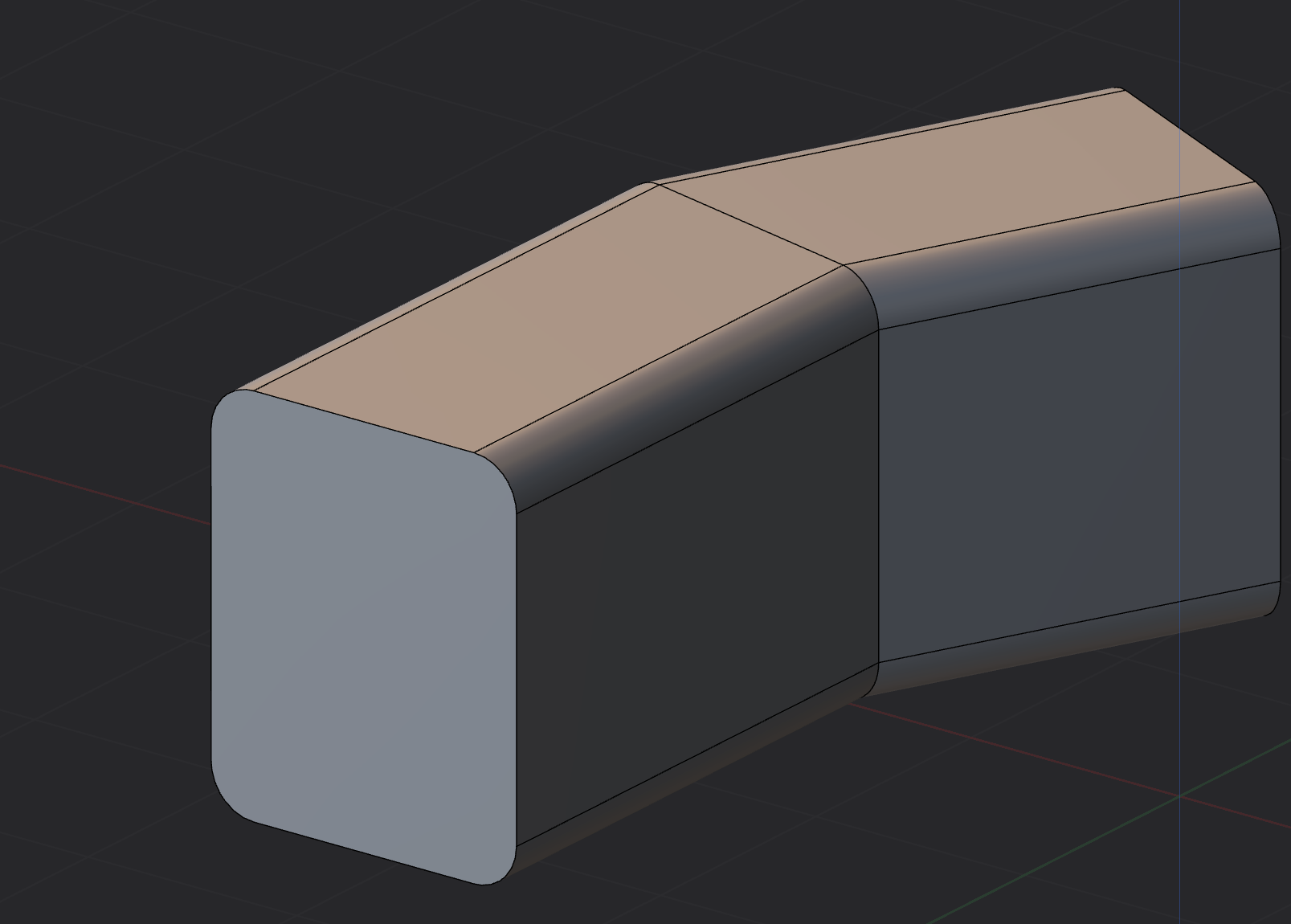[IFC] Which geometry type in IFC should I use if I want to design a body as shown in this thread?
Which geometry should I use if I want to design a body as shown below in IFC?
It is a cuboid with round corners and the faces (green line) are angled, as shown from the top view on the left.
One option is IfcAdvancedBrep, are there others?

Tagged:



Comments
IFC Building Proxy?
IfcSurfaceCurveSweptAreaSolid with an IfcCompositeProfileDef with rectangles and quarters of a circle? It doesn't look super easy, in any case.
AdvancedSweptSolid?
https://standards.buildingsmart.org/IFC/DEV/IFC4_2/FINAL/HTML/schema/ifcrepresentationresource/lexical/ifcshaperepresentation.htm
There is a planar profile in your image? Don't really understand your drawing.
ditto. :)
Some related threads for inspiration:
https://community.osarch.org/discussion/1060/
https://community.osarch.org/discussion/1079/
I mean, exactly, the way User Bedson modelled the body in Blender. I know that my drawing seems a bit questionable. :)
@Bedson Could you share your file?
@cvillagrasa Is it possible to connect two different profiles with IfcSurfaceCurveSweptAreaSolid?
I was just wondering if there was any other way than using IfcAdvancendBrep, since this is not supported on all viewers.
@Martin156131 having a better look, maybe IfcSectionedSpine is the one for this.
Ah, apologies, I did the model in Plasticity.
IFC4X3 seems to offer https://ifc43-docs.standards.buildingsmart.org/IFC/RELEASE/IFC4x3/HTML/lexical/IfcDirectrixCurveSweptAreaSolid.htm which is probably due to the need to have cross sections going through a directrix (because it sounds like what you want is almost the same as https://ifc43-docs.standards.buildingsmart.org/IFC/RELEASE/IFC4x3/HTML/lexical/IfcSweptDiskSolid.htm except instead of a circle it's some other profile).
Another approach is to model as two separate representation items, each one being a clipped extruded area solid.
Another approach is to model as two separate elements, each one also being a clipped extruded area solid, but perhaps additionally with a material profile set.
@aothms knows all the geometry in IFC inside out - I'm sure he'll know the best answer :)
Question is also whether the curve being swept is planar. If that's the case it's rather straight forward to have an IfcSurfaceCurveSweptAreaSolid with a plane as a ref surface, a polyline on this plane, which then makes the X direction of the profile track the (constant) surface normal of the plane).
If that curve is not planar, then (as moult suggested, but take note of the subtypes) IfcFixedReferenceSweptAreaSolid might be a good fit. Both are subtypes of which @Moult suggested.
I'm not sure if the type of joins at the discontinuities is specified in the IFC spec. You seem to indicate a straight join (cylindrical surface segments directly touching), but implementations might also give you a round join (cylindrical surface segments joined with a toroidal surf).
Or, as moult suggested, individual segments as trimmed extrusions (IfcHalfSpaceSolid, IfcExtrudedAreaSolid, IfcBooleanResult). This will likely give you the best results in the widest set of tools. Gives you most control over the joins. But it'd obscure the fact that it is a sweep along a directrix, if you care about the semantic intent of the geometry, it'd be less ideal.
A minor note about the type of joins is that swept disks have this description:
At a glance I couldn't see a similar clause for other sweeps but maybe this is something I missed or something buildingSMART needs to clarify.